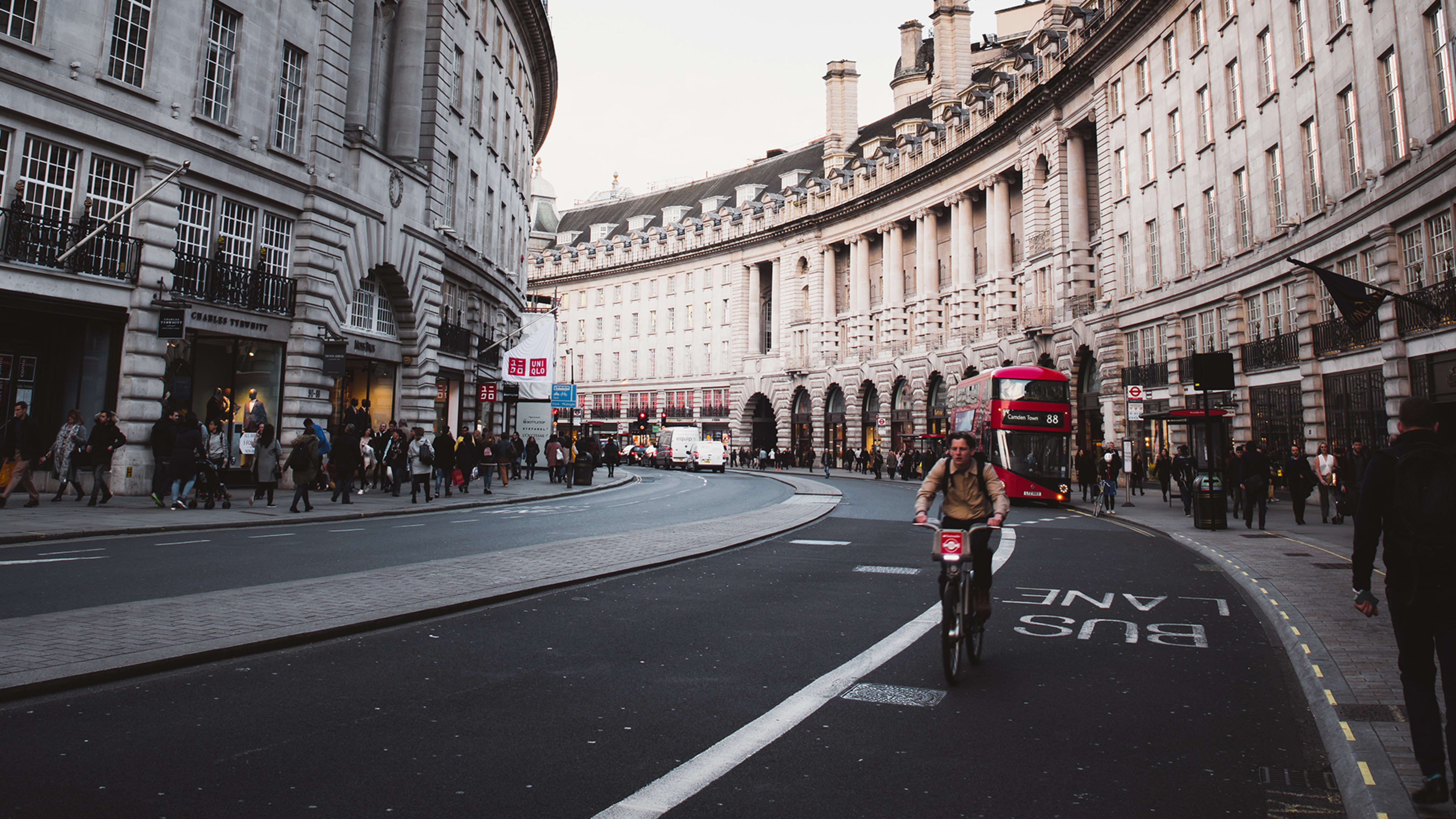On October 7, the United Nations Intergovernmental Panel on Climate Change shocked the world–or at least affirmed our worst suspicions–with a report on the necessity of keeping global warming below 1.5 degrees Celsius, or risk widespread wildfires and swaths of heat-scorched land, and flooding bad enough to sink coastal cities. To hit that target, countries, local governments, and countries alike will need to fully decarbonize and shift to renewable energy by 2050.
It’s a steep, and necessary, order, but there’s proof that the City of London is already on track: The day after the report came out, the City introduced a plan to dramatically reduce car traffic and speeds in the financial district, colloquially known as the Square Mile. Under the proposals from the City of London Corporation, the local authority for the district, cars would be banned from half of all roads in the city center, and vehicles passing through on access roads would be limited to 15 mph. The move, according to the Evening Standard, is intended both to improve cyclist and pedestrian safety, and reduce emissions.
The City of London Corporation presented the draft plans to local elected officials as part of the lead-up to the unveiling of its final Transport Strategy, which the agency will publish next spring, and about which it’s been sourcing feedback and suggestions over the course of this year. At the core of the Transport Strategy for the district is pedestrianizing streets around key local tube stations like Liverpool Street and Moorgate, and adding more two-way, protected bike lanes on major streets.

Over 90% of the journeys through the Square Mile involve walking, yet when the City polled people that travel through the district, they found that 84% of people think pedestrian pavements are overcrowded. Three in five people think the needs of cyclists and pedestrians are underprioritized in the district.
To Hayward, that does not spell a sustainable future–either spatially or environmentally. If the City moves forward with the plans, which are up for a vote later this fall, it will not be the first step the district takes toward creating a more human-scale and sustainable streetscape: Over the summer, the local parking authority began adjusting parking fees in accordance with a vehicle’s emissions, and its also considered banning high-emission vehicles altogether from some streets (Central London is notorious for terrible air quality). It also falls in line with policies under way in other cities. Oslo, for instance, is moving toward a car-free city center next year, and Madrid plans to outlaw cars from 500 acres of its city center by 2020.
Especially in light of the U.N.’s report on climate change, the importance of cities moving away from private diesel cars cannot be overstated. In the United States, for instance, the transportation sector is responsible for the highest portion of carbon emissions, and while moving to electric vehicles and buses will address that, eventually, it won’t address the spatial constraints facing congested cities like London. For such places, shifting the priority to cyclists, pedestrians, and public transport is common sense, and ideally, the City of London’s plan will evolve to where the car ban on half the district’s streets extends to all of them.
Recognize your brand’s excellence by applying to this year’s Brands That Matter Awards before the early-rate deadline, May 3.
